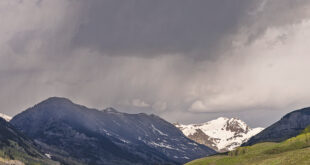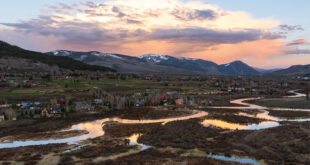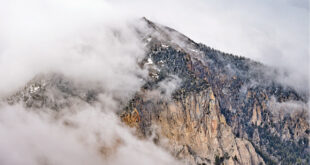Take out all the ancillary angst and the Brush Creek decision almost seems too simple. A philanthropist/developer heeds the call to help with the affordable housing issue in the Crested Butte community. He comes up with a plan and gets the early nods from everyone, including representatives of Crested Butte. The proposal looks good and will take a bite out of the lack of housing near town.
What could go wrong? Then there is unexpected, pretty strident, push-back.
The majority of people of all stripes who work or live near the site of the proposed Corner at Brush Creek in the north end of the valley think it is too much for that space: 240 units housing probably 700 people on about 14 acres. Those who have voiced concerns include Town Council representatives who would love more affordable housing, local Crested Butte business owners who would love more spots for their employees to live, low-income wage earners who are struggling to find places to live and would love a solid roof but don’t want to live in a dense, urban apartment complex, and even local realtors who generally like more building have spoken against this.
The philanthropist says he is doing it to help the town and won’t make any money on the deal. The town is saying thanks—but after some more vetting, the proposal appears too dense and out of character for the community that depends on community character for its livelihood and sanity. It seems a simple decision for a developer who won’t make money on the deal to either listen to the town he stepped up to help and cut the density (and maybe get sewer facility help in return)—or walk away with the good karma of having tried to do something he thought was wanted. Simple.
But, he is hearing strong support from county representatives who primarily live at the south end of the valley and from some of the county’s big employers who see a cheap opportunity to get their housing issues addressed. The project can likely provide some good housing for local workers so the concept is not out of line. The density at that location is.
The developers, especially project manager John O’Neal, tout that it is the people who make this place special. There is no doubt that the people are a big, even the biggest part, of that specialness puzzle. No one disagrees when John makes that point. But that is just one piece of a big jigsaw puzzle. The push-back from the town is about density and scale, including more focus on the lowest of wage earners and the feeling that this proposal is just not of this place. It is the change in the built environment and the ramifications that come with 700 more people in a small space.
Seemingly lost in the discussion are other elements that make up the whole community planning puzzle and mitigate growth. People don’t want to be stacked in a project that feels like a Lakewood condo complex next to Home Depot. They want the Crested Butte model of being integrated into neighborhoods that include other workers, wealthier locals who live here year-round and second homeowners who are considered part of this community make-up. This proposal creates a dense island of the working class. Three acres of natural open space surrounded by dozens of buildings does not a “Central Park” make. A crowded school will become more crowded. Overused fields in Crested Butte will see more use.
Affordable housing on that property is appropriate and a benefit that pretty much everyone agrees on. But it is the entire puzzle that matters in the big picture. The idea of a workforce island is bothersome. The vibe of a dense suburban housing project is bothersome. The total rental aspect with no ownership possibilities is bothersome. This could actually fit much better in a place like Mt. Crested Butte that has large tracts of open land and town services already in place that would make it cheaper to develop. I’m not sure why that option seems ignored.
The current proposal obviously brings more growth to the north end of the valley that will need to be mitigated. Affordable housing has always been and will always be an issue in places like Crested Butte. All the experts say you cannot build your way out of the problem, so with every housing development there should be real measures that address the whole puzzle. Given the growth that will come from the project, a place for soccer fields and a new elementary school building might make sense at a minimum on that acreage.
The primary attraction from local politicos is that they wouldn’t have to put in a public subsidy beyond the land to make the project work. But they will. The subsidy may not come in the form of hard dollars to this particular project but it will come in the form of changing the community with a big-city, suburban rental project. The subsidy will come in crowded classrooms that will eventually be addressed with an almost guaranteed tax increase request. The subsidy will come in overcrowded fields in Crested Butte and probably come in a stoplight at Brush Creek Road. The subsidy will come with the big employers not having to build their own housing for their employees.
Changing the character of the community and ignoring mitigation measures that come with growth is a real and significant public subsidy and one that should be considered as the project is discussed.
—Mark Reaman
 The Crested Butte News Serving the Gunnison Valley since 1999
The Crested Butte News Serving the Gunnison Valley since 1999





